
Smart Fortwo Cabriolet engines, drive and performance
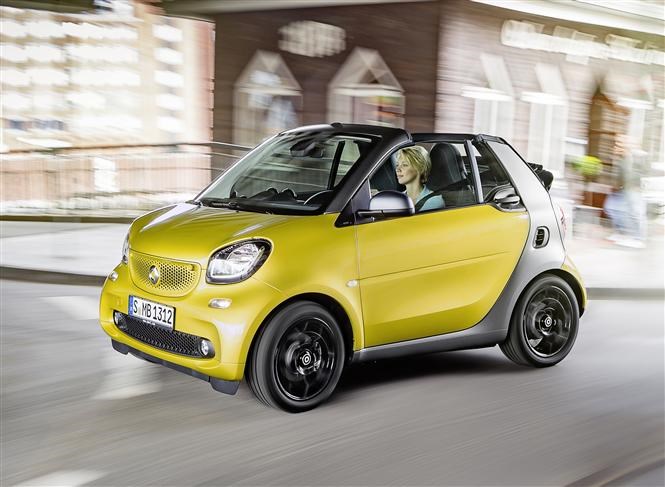
The Smart Fortwo Cabriolet’s engine line-up is relatively simple to decode. You’ve got a choice of two three-cylinder petrol engines providing the performance.
Both can be mated to Twinamic double-clutch auto transmission or five-speed manual gearbox, all with automatic stop/start.
First up is the 999cc, 70bhp version that boasts 91Nm of torque available at 2,850rpm. This one will cover 0-62mph in 14.9 seconds with the manual gearbox or 15.5 with the automatic, and go on to a top speed of 94mph.
The other engine is smaller (at 898cc) but turbocharged to make 89bhp and 135Nm of torque at 2,500rpm. It’ll go from 0-62mph in 10.8 seconds with the manual gearbox (or 11.7 seconds with the automatic) and reach 96mph flat-out.
We found the automatic transmission much better, the Fortwo Cabriolet feeling pretty spritely in the urban environment where most Smarts live. However, it can still be slow in responding to demands from the throttle for a downshift on the open road. Manual override cures this to an extent, but the lever’s irritating to use because it’s the wrong way round. Only Proxy grade secures paddle-shifters.
The Smart Fortwo Cabriolet is hilariously wieldy round town thanks to its diminutive turning circle allied to light steering, though ultimately it’s still a little too long for nose-on parking.
Over the previous model its extra 10cm width helps deliver a surprisingly big-car feel to open-road driving, and also allows for the engineering of extra suspension travel for a modest improvement in ride quality.
There’s no getting over the occasionally juddery ride quality on poorer road surfaces, though, and you tackle sleeping policemen at anything more than a crawl at your peril.
Go too fast and the electronic stability systems will cut in long before you come a-cropper.


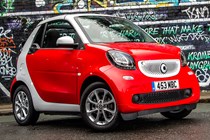
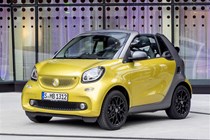
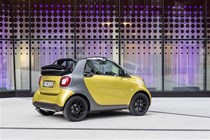
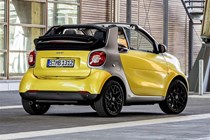
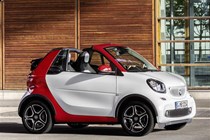
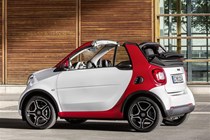
.jpg)
.jpg)
.jpg)
.jpg)
.jpg)
.jpg)
.jpg)
.jpg)
.jpg)
.jpg)
.jpg)
.jpg)
.jpg)
.jpg)
.jpg)
.jpg)
.jpg)
.jpg)

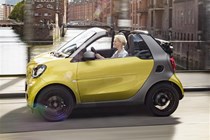
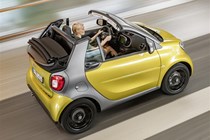
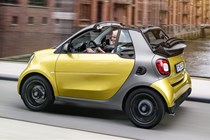
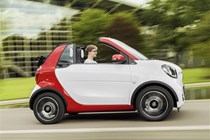
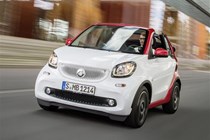
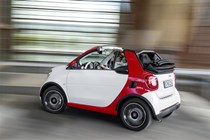
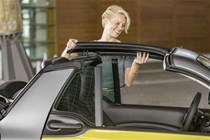
.jpg)
.jpg)
.jpg)
.jpg)
.jpg)
.jpg)
.jpg)
.jpg)
.jpg)
.jpg)
.jpg)
.jpg)
.jpg)
.jpg)
.jpg)
.jpg)
.jpg)
.jpg)
.jpg)
.jpg)
.jpg)
.jpg)
.jpg)
.jpg)
.jpg)
.jpg)
.jpg)
.jpg)
.jpg)
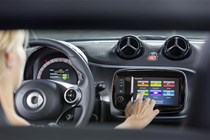
.jpg)
.jpg)
.jpg)
.jpg)
.jpg)
.jpg)
.jpg)
.jpg)
.jpg)
.jpg)
.jpg)
.jpg)
.jpg)
.jpg)
.jpg)
.jpg)
.jpg)
.jpg)
.jpg)
.jpg)
.jpg)
.jpg)
.jpg)
.jpg)
.jpg)
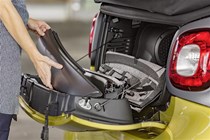
.jpg)
.jpg)
.jpg)
.jpg)
.jpg)
.jpg)
.jpg)
.jpg)
.jpg)






.jpg?quality=50)
.jpg?quality=50)
.jpg?quality=50)
.jpg?quality=50)
.jpg?quality=50)
.jpg?quality=50)
.jpg?quality=50)
.jpg?quality=50)
.jpg?quality=50)
.jpg?quality=50)
.jpg?quality=50)
.jpg?quality=50)
.jpg?quality=50)
.jpg?quality=50)
.jpg?quality=50)
.jpg?quality=50)
.jpg?quality=50)
.jpg?quality=50)








.jpg?quality=50)
.jpg?quality=50)
.jpg?quality=50)
.jpg?quality=50)
.jpg?quality=50)
.jpg?quality=50)
.jpg?quality=50)
.jpg?quality=50)
.jpg?quality=50)
.jpg?quality=50)
.jpg?quality=50)
.jpg?quality=50)
.jpg?quality=50)
.jpg?quality=50)
.jpg?quality=50)
.jpg?quality=50)
.jpg?quality=50)
.jpg?quality=50)
.jpg?quality=50)
.jpg?quality=50)
.jpg?quality=50)
.jpg?quality=50)
.jpg?quality=50)
.jpg?quality=50)
.jpg?quality=50)
.jpg?quality=50)
.jpg?quality=50)
.jpg?quality=50)
.jpg?quality=50)

.jpg?quality=50)
.jpg?quality=50)
.jpg?quality=50)
.jpg?quality=50)
.jpg?quality=50)
.jpg?quality=50)
.jpg?quality=50)
.jpg?quality=50)
.jpg?quality=50)
.jpg?quality=50)
.jpg?quality=50)
.jpg?quality=50)
.jpg?quality=50)
.jpg?quality=50)
.jpg?quality=50)
.jpg?quality=50)
.jpg?quality=50)
.jpg?quality=50)
.jpg?quality=50)
.jpg?quality=50)
.jpg?quality=50)
.jpg?quality=50)
.jpg?quality=50)
.jpg?quality=50)
.jpg?quality=50)

.jpg?quality=50)
.jpg?quality=50)
.jpg?quality=50)
.jpg?quality=50)
.jpg?quality=50)
.jpg?quality=50)
.jpg?quality=50)
.jpg?quality=50)
.jpg?quality=50)